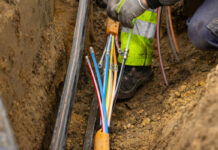
The Government of Ghana has taken vital steps in resuscitating the electricity sector – from, intervention funds, meter procurement, and investment in new power plants to mention a few.
It is understandable that these fundamental changes will take time to fully turn the sector around and assure Ghanaians of constant power supply.
With technical and commercial losses running at about 25%, the entire system will struggle to make the necessary investment to ensure a sustainable and reliable power system.
A large percentage of these losses can be attributed to energy theft – people consuming power without paying for it. Organised and widespread theft of electricity continues to be a longstanding problem crippling the efforts of the Electricity Company of Ghana despite the deployment of its prepaid metering system.
This can happen either inadvertently or deliberately. Inadvertently because the power companies are not metering and collecting the payment. This is usually a smaller percentage because the power companies simply use estimated billing to cover for the unmetered consumers.
The deliberate stealing of electricity is widespread and happens through various schemes including – direct connection to the overhead low tension distribution cables, bypassing the meter so that only a small load is connected to it while the rest are connected directly to the supply behind the meter or tampering with the meter to make its reading inaccurate.
The deliberate stealing of electricity is more often than not aided and abetted by experienced (current or past) technicians who understand how the systems work. In these instances, the use of smart meters which are able to send their status readings to a central server are easily defeated.
The smart meter will only have records of the electricity passing through the network it is connected to. If it is bypassed, or the connection is directly to the distribution line, the smart meter is unable to detect and report the anomaly.
When the meter is itself tampered with by experienced technicians, they may also be able to fool the meter into not reporting the breach. Smart meters depend on being able to communicate their status to a central server which can then analyse the information and hopefully be able to infer thefts using different algorithms.
Considering the amount of data each meter produces, few organisations can afford the computing power needed to execute these algorithms in near real time. For instance in the case of Austin Energy in the US with 500,000 meters, the utility’s yearly data storage needs grew from 20,000MB to 200,000MB in a relatively short period (each meter producing in excess of 140MB a year). It is of very little use detecting theft once a month.
If done in real time, perpetrators can be caught and prosecuted. If done in real time, the theft can also be stopped. Analysing the large quantity of data to detect theft in real time using data from smart meters in one central server soon exceeds the cost of the theft.
Working with technical partners around the globe, CWG Plc has developed a solution that makes it possible to detect theft and alert the power companies with the precise location where the theft is happening in near real time, not more than three minutes after it occurs without requiring large computers and complex expensive algorithms.
This system uses distributed microcomputers mounted on pole top units, continuously applying Kirchokoff’s laws of electricity flow to determine when the energy flows do not balance and using that to detect energy losses most likely due to theft.
Once a theft is detected, the central server is alerted and the alert is passed on to line men or other dedicated technicians who can be mobilised to investigate.
The unit can also cut off power if needed. This system is far cheaper and more robust than the ‘smart meter and super computer combo’ being promoted by most other vendors. We can very quickly reduce the losses due to theft by more than 80% within a few months.






















